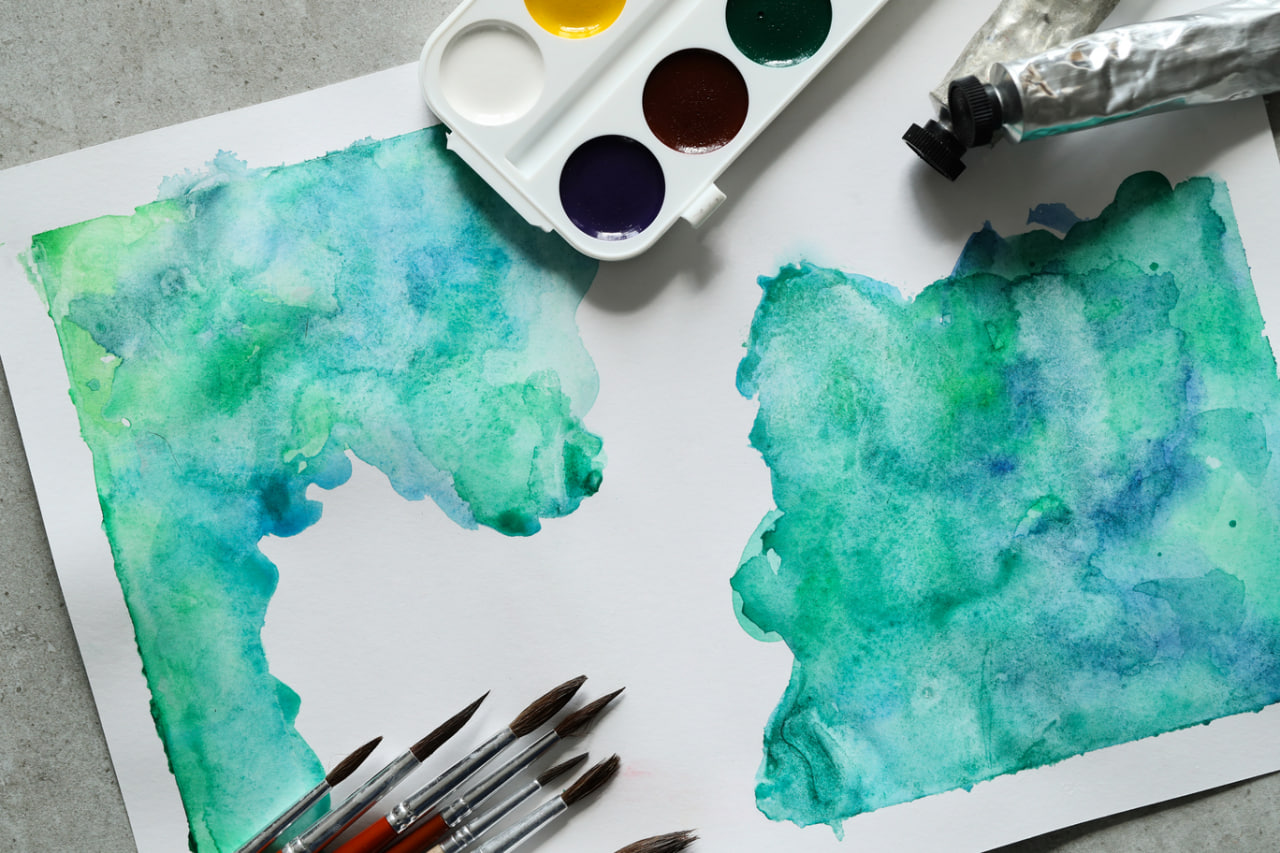Overcoming Common Challenges in Watercolor Painting
Watercolor painting is a medium that combines beauty, fluidity, and unpredictability. While its transparency and spontaneity allow for stunning effects, beginners and even experienced artists often encounter challenges that can hinder progress. Understanding these common difficulties and learning how to address them is essential for building confidence and achieving consistent results in watercolor art.
Controlling Water and Pigment
One of the most common challenges in watercolor is managing the balance between water and pigment. Too much water can lead to uncontrolled bleeding, uneven washes, and loss of detail, while too little water can create streaks and harsh edges.
Practicing control over water-to-paint ratios is key. Start with small swatches and experiment with different dilutions to observe how the pigment behaves. Learning how water interacts with the paper and adjusting pressure and brushwork accordingly allows artists to achieve smooth washes and consistent color intensity.
Avoiding Muddy Colors
Mixing colors in watercolor can sometimes result in dull or muddy tones, especially when combining multiple pigments without consideration for color harmony. This often occurs when complementary colors are overmixed or when layering without proper drying time.
To prevent muddy colors, plan your palette and mix carefully, starting with small amounts. Allow layers to dry before applying additional washes, and consider glazing techniques to build depth gradually. Understanding basic color theory and practicing color swatches can also improve accuracy and vibrancy in your work.
Managing Paper Warping
Watercolor paper can warp or buckle when exposed to excessive water, making it difficult to paint evenly. This is particularly common when working with large washes or heavy applications of pigment.
Using high-quality, thick watercolor paper or taping the paper to a sturdy surface can minimize warping. Additionally, pre-wetting the paper evenly or working in smaller sections helps maintain a smooth surface. Proper drying techniques, such as pressing the finished work under a board, can restore flatness and prevent damage.
Controlling Bleeding and Edges
Unintended bleeding or soft edges can create problems in watercolor painting, especially when defining shapes or creating precise details. Wet-on-wet techniques naturally produce softer edges, but sometimes sharper definition is required.
To control bleeding, paint wet-on-dry for more precise shapes and use masking fluid to protect areas you want to remain clean. Lifting excess pigment with a damp brush or paper towel can also refine edges and maintain clarity in your composition. Practicing different edge techniques helps artists gain confidence in managing soft and hard transitions.
Layering and Transparency Issues
Watercolor’s transparency is one of its most beautiful qualities, but improper layering can lead to uneven tones, patchiness, or overworked areas. Beginners often struggle with knowing when to add layers and how to preserve luminosity.
The key is patience and observation. Allow each layer to dry completely before applying the next, and use thin, controlled washes to build depth gradually. By understanding the medium’s behavior and practicing layering techniques, artists can enhance vibrancy while maintaining the ethereal quality of watercolor.
Addressing Mistakes and Corrections
Unlike opaque mediums, watercolor is less forgiving when it comes to corrections. Overpainting or scrubbing can damage the paper or create unwanted textures. Learning to accept minor imperfections and adapt them creatively is an important skill.
Techniques such as lifting pigment with a damp brush, adding negative space, or incorporating mistakes into the composition can transform errors into opportunities. Viewing challenges as part of the creative process encourages experimentation and builds resilience.
Building Confidence Through Practice
Many challenges in watercolor arise from lack of experience or confidence. Regular practice with focused exercises, such as creating washes, practicing brush control, and experimenting with blending, improves technical skill and familiarity with the medium.
Observation of natural light, color, and texture also enhances artistic judgment and problem-solving ability. Over time, repeated exposure to challenges builds confidence, allowing artists to approach complex compositions with skill and creativity.
Embracing the Medium’s Unpredictability
Part of mastering watercolor is learning to embrace its unpredictability. Accidental blooms, unexpected gradients, and spontaneous color interactions are inherent to the medium. Viewing these outcomes as opportunities for creative exploration rather than mistakes can lead to unique and expressive artwork.
By understanding common challenges and implementing strategies to address them, artists can gain control over the medium while still celebrating its fluid, spontaneous nature. Overcoming these obstacles leads to greater confidence, technical proficiency, and freedom to experiment with creative expression in watercolor painting.

